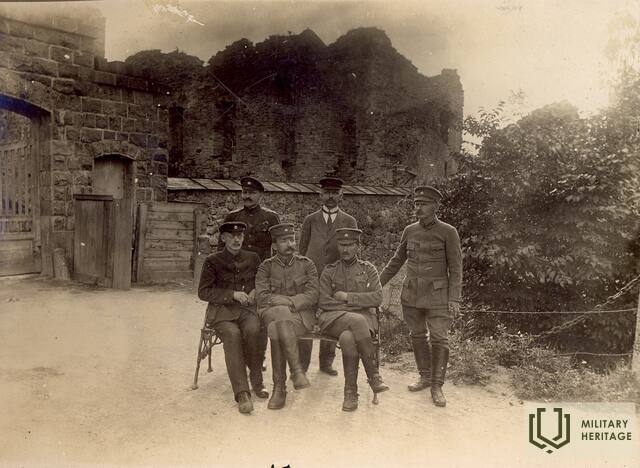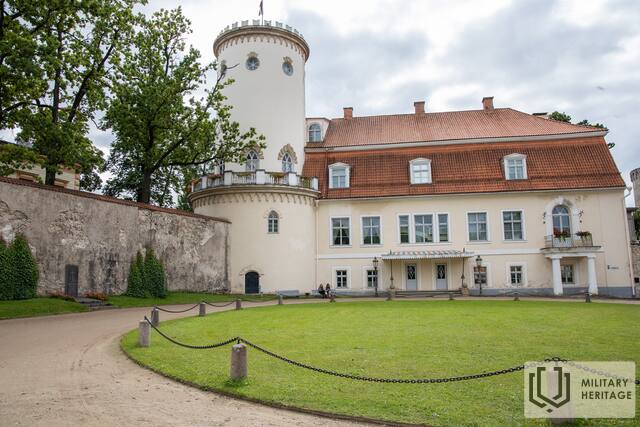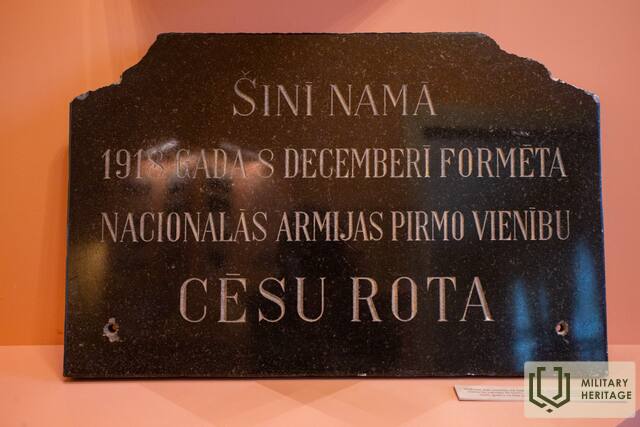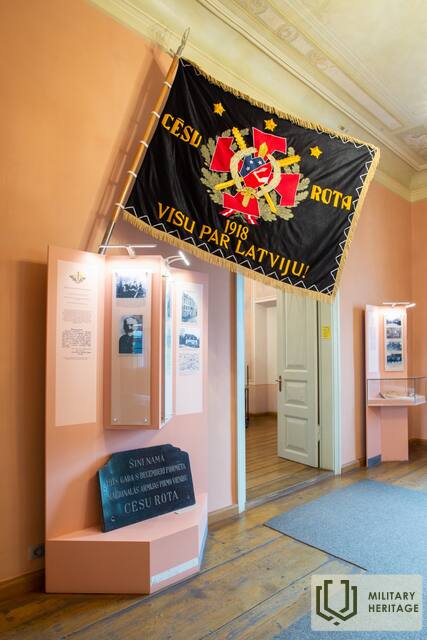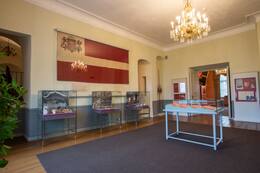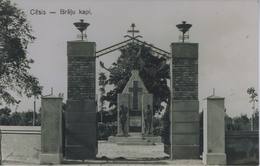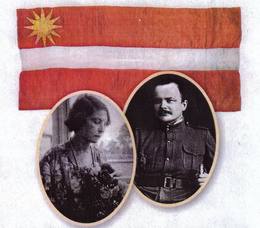Cēsis New Castle – walls that created the security of the Latvian state and still protect identity documents
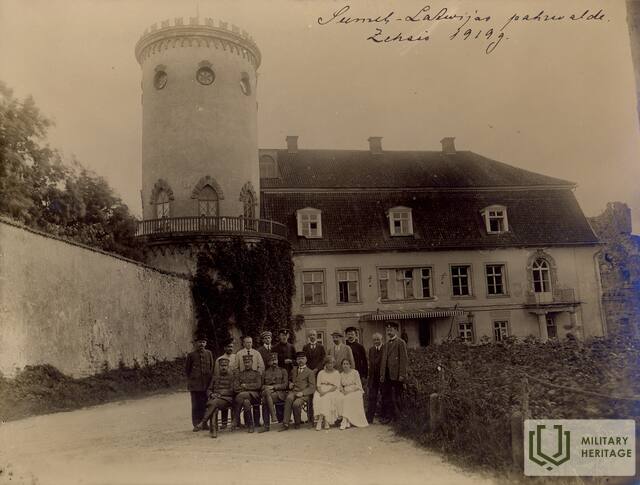
The Cēsis New Castle was built on the ruins of a military fortification – a medieval castle. However, this is not the only military significance of the building.
The beautiful residence of Counts Sievers has not only provided for the safety and well-being of its owners and builders, but has also witnessed the birth of the first formations of the Latvian armed forces within its walls. On December 8, 1918, the Cēsis Company was formed there, which participated in the first battles of the Latvian Liberation War. These are the earliest battles for which several participants were awarded the Lāčplēsis War Order. Later, the company was included in the so-called Kalpak Battalion, which fought for the liberation of Latvia in Courland in 1919.
In 1919, the Cēsis New Castle served as a refuge for the Latvian Provisional Government of Kārlis Ulmanis – the castle only housed the Civil Administration of Northern Latvia. This was the time when the city of Cēsis gained the status of a capital city for three days.
Since 1949, the walls of the Cēsis New Castle have been a safe haven for historical artifacts collected by the Cēsis History and Art Museum. Thanks to the student association “Līdums”, the Cēsis Museum has been an important custodian of the history of the Latvian flag since 1933. The museum staff have not only carefully preserved these valuable testimonies for our country, but have also been brave enough to protect them from destruction during the years of Soviet occupation: shortly after the end of World War II, Erna Berkholce, a scientific associate of the Cēsis Museum, participated in the removal of flag history materials from the museum collection. She took the materials intended for destruction home and preserved them. In 1997, she donated them back to the museum.
After the restoration of Latvia's independence, museum staff have been working tirelessly to research and popularize the history of the flag. In 2000, the museum historian, Dr.hist. Tālis Pumpuriņas published a comprehensive book entitled “Red, White and Red – The Colors of the Latvian Flag. Research, Memories, Documents on the History of the Latvian National Flag”. Since 2012, a special room in the museum’s exposition has been dedicated to the history of the flag – the Flag Hall – where the first Latvian national flag created by Jānis Lapiņš can also be viewed. 2016 is special for it, as 100 years have passed since the creation of the flag.
Cēsis History and Art Museum, 09.11.2016
Related topics
Related objects
Cēsis history and art museum in the New Castle of Cēsis
The Cēsis History and Art Museum is located in the very centre of the Old Town of Cēsis, in the New Castle. The museum holds a permanent exhibit of history and interiors named ‘Cēsis, a Symbol of Latvian History’, with two thematic sections: the exhibit ‘Red-White-Red Flag in the History of Cēsis and Latvia’ explains the history of the Latvian national flag from the 13th to 20th centuries, the approved national symbol, the flags of Latvian rifle battalions and the traditions of using national colours during the Latvian War of Independence. The exhibit ‘Cēsis and the Latvian War of Independence’ focuses on the founding of the Cēsis Company in December 1918, the joint battle efforts of Estonians and Latvians in the 1919 Battles of Cēsis, the time when, during the Bermondt Affair, Cēsis served as the temporary capital of Latvia for a short time, as well as the history of the Cēsis Victory Monument. In an escape room named ‘Legends of the Battles of Cēsis’, the participants have one hour to find their way out by solving puzzles, making connections and finding hidden objects. The Cēsis Company, one of the first units of the Latvian Armed Forces, was established on 8 December 1918 in Cēsis Castle by Senior Lieutenant Artūrs Jansons. The museum’s exhibit features a memorial plaque dedicated to the Cēsis Company, unveiled on 8 December 1933 at the Cēsis New Castle, which, at the time, served as the headquarters of the 8th Daugavpils Infantry Regiment and the garrison officers’ club.
Cēsis Brothers' Cemetery
Located in the Cēsis Lower Cemetery, Lenču Street 15, Cēsis.
One of the most significant memorial sites of the First World War and the War of Independence in Cēsis is the Brothers' Cemetery in Lejas Kapis.
The cemetery houses the Brothers' Cemetery Monument, designed by Cēsis artist and councilor Augusts Julla (1872-1958), unveiled in 1927, and dedicated to the soldiers buried in the Brothers' Cemetery from 1915 to 1920.
About 200 soldiers are buried in the Brothers' Graves of the Cēsis Leja Cemetery. Among them are an unknown number of Latvian riflemen and Russian soldiers who fell in World War I, as well as soldiers of German (10), Polish and other nationalities. During the Latvian Liberation Struggles, 22 soldiers of the 5th (2nd) Cēsis Infantry Regiment were buried in this cemetery, as well as 11 freedom fighters who fell in other Latvian army units. 2 Estonians, 15 victims of the Bolsheviks, and Latvian Red Riflemen also rest in the Brothers' Graves.
Memorial site of J. Lapiņš, the author of the first Latvian flag
Located in “Lejas Pintuļi”, Veselava parish, Priekuļi municipality.
A memorial to Jānis Lapiņš, the author of the Latvian flag, is visible.
The creation of the Latvian national flag took place during World War I. In 1915, when creating the flags of the Latvian rifle battalions, individual artists proposed red, white and red colors for the flag designs. After the design of the educator and journalist Jānis Lapiņš, the red, white and red flag was made in the second half of 1916 by his student, Marianna Straumane, a teacher at the Valmiera refugee shelter.
This is the first known and actually made Latvian national flag, which has survived to this day.
In 2014, a memorial site for the pre-flag author Jānis Lapiņš was opened in “Lejas Pintuļi” of Veselava parish, Priekuļi region.
The first known authentic Latvian national flag, which was smuggled into Russia and carefully hidden during the Soviet and German occupations, is currently kept in the Cēsis History and Art Museum . It was donated in 1997 by their daughter Lija Poga.




